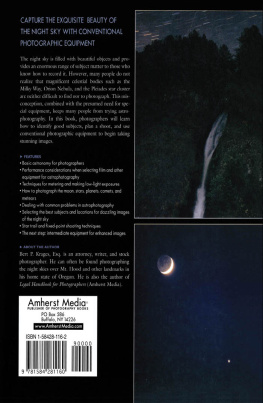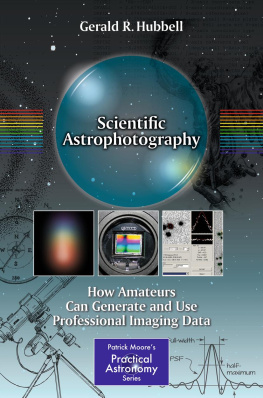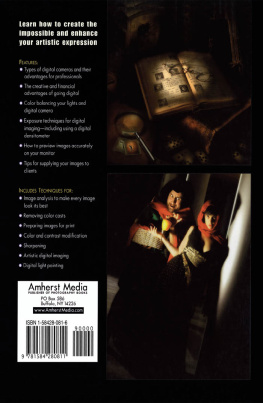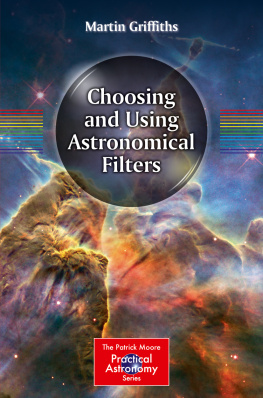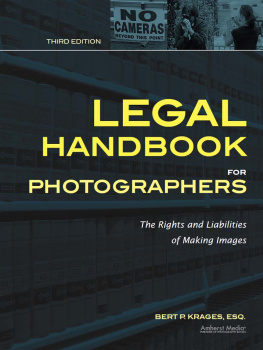


To my wife
KATHRYN PYLE KRAGES
Dont wait up, Ill be home soon.
Copyright 2004 by Bert P. Krages, Esq.
All photographs by the author.
All rights reserved.
Published by:
Amherst Media
P.O. Box 586
Buffalo, N.Y. 14226
Fax: 716-874-4508
www.AmherstMedia.com
Publisher: Craig Aesse
Senior Editor/Production Manager: Michelle Perkins
Assistant Editor: Barbara A. Lynch-Johnt
ISBN: 1-58428-116-2
Library of Congress Control Number: 2003103026
Printed in Korea.
10 9 8 7 6 5 4 3 2 1
No part of this publication may be reproduced, stored, or transmitted in any form or by any means, electronic, mechanical, photocopied, recorded or otherwise, without prior written consent from the publisher.
Notice of Disclaimer: The information contained in this book is based on the authors experience and opinions. The author and publisher will not be held liable for the use or misuse of the information in this book.
Astrophotography is a very feasible genre, yet most photographers all but ignore the night sky. A major reason, of course, is that photography requires light, and night skies tend to be rather dark. Another reason is that most photographers give little thought to including celestial objects in their imagesexcept for the occasional sunrise or sunset. However, the night sky is filled with beautiful objects and provides an enormous amount of material to those photographers who know how to record it. By learning how to photograph the night sky, photographers can greatly increase their opportunities for artistic expression.
Only basic equipment is needed to do a good portion of astrophotography.
The two major obstacles that keep many photographers from attempting astrophotographyequipment and ignorance of astronomyare easily overcome. Only basic equipment is needed to do a good portion of astrophotography. Not only can a lot be done with a camera and tripod, this basic setup provides a very versatile means of making images. Likewise, it is not all that difficult to learn enough about astronomy to plan and execute incredible images. Many people do not realize that magnificent celestial objects such as the Milky Way, Orion Nebula, and the Pleiades star cluster are neither difficult to find nor to photograph. Learning more about the night sky will give you a new view of the universe and increase your consciousness of the night environment.
This book will provide the information you need to learn how to do astrophotography with conventional photography equipment and introduce you to photography with intermediate-level astronomical instruments. It largely avoids discussing highly specialized astrophotography applications such as CCD cameras, hypersensitized films, and digital enhancement techniques. Instead, it emphasizes how to get the most performance from conventional gear that many photographers already have. It also makes suggestions for getting started with photography using astronomical instruments. The book does not presume a prior background in astronomy. To take good photographs, one does not need to know about physics, black holes, red shifts, or either the special or general theory of relativity. You do need to know where the planet Earth is located. If you are unsure, look down.


Thousands of people photograph Mt. Rainier in Washington State each year. Photographing landmarks at night provides new opportunities for expression. Lens: 24mm. Exposure: 30 seconds at f/4. Film: Fuji Superia 400.A few stars can add some elegance to an otherwise uninteresting scene. Lens: 50mm. Exposure: 15 seconds at f/2. Film:Kodak E100SW.


Modem emulsions have greatly enhanced the opportunities for astrophotography with conventional equipment. Twenty years ago, only the brightest stars could be recorded with a camera and tripod without significant trailing. Compare photographs of the W-shaped constellation Cassiopeia shot with slow and fast films.Lens: 50mm. Exposure: 10 seconds at f/2. Film: Konica Centuria 800.Lens: 24mm. Exposure: 15 seconds at f/4. Film: Fuji Velvia. Exposure: EI 40.
There is a lot more to the night sky than meets the eye. Since it is filled with beautiful objects, the amount of material to photograph becomes enormous once you understand how to record it. If you already have experience with a genre such as landscape photography, learning astrophotography techniques can help expand your repertoire and create more opportunities to make images.
One of the benefits of learning astrophotography is that it can be a source of adventure. Some interesting astronomical event happens just about every week. Many, such as meteor showers, occur at the same time every year. Other events such as comets are not as predictable but happen more frequently than you may suspect. Furthermore, the ability to predict events goes hand in hand with the ability to plan how to photograph such events.
Traditionally, astrophotography has been tine domain of astronomers interested in recording images of the objects they observe. Astrophotography has also been a major research tool in astronomy for over a century. In prior years, the slow photographic emulsions available meant that long exposures and special tracking devices were required to make even basic images. Until about twenty years ago, equipment capable of precise tracking was mostly available at research institutions or large public observatories. Astrophotography was an established tool for astronomical research but not widely practiced by amateurs. The quality of astronomical equipment available to amateurs until recently also discouraged photographers from attempting astrophotography. In the past, only the most dedicated amateur astronomers were interested in investing in the highly specialized equipment needed to track and photograph celestial objects.
However, improvements in films within the last ten to fifteen years now allow photographers to record celestial objects more effectively than could be done with the emulsions and instruments available previously. The key to becoming proficient is to learn some basic astronomy and to understand the influence that light and optics have on the ability to record celestial objects.
There is a common misconception that astrophotography requires expensive telescopes operated at very high magnifications. This misconception is partly due to advertisements of junk telescopes boasting magnifications in the range of 300 to 600 times. In reality, most advanced astrophotography is done with telescopes with focal lengths in the range of 500 to 2000mm. These focal lengths are not that much longer than the focal lengths used in conventional photography. In fact, many or the highest quality astronomical images have been made with telescopes having focal lengths of less than 700mm. Furthermore, most highly accomplished astrophotographers use conventional photographic systems to make a good portion of their images. Many celestial objects are too large to be imaged with anything but conventional lenses. If you are interested in becoming proficient at astrophotography, it is important not to underestimate the capabilities of conventional equipment.
Next page
